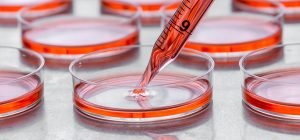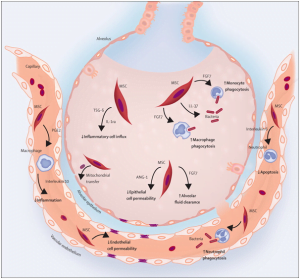One of the major concerns of most people is to look young and have healthy skin. The breakout of acne is associated with social and psychological problems that have led to so many products available in the market to treat this skin condition. These Adipose Mesenchymal Stem Cells treatment range from home remedies to diet changes to supplements to antibiotics to creams, laser therapy and even hormonal therapy. As the factors behind acne are multiple, it is difficult to pinpoint a particular treatment. Plus, each treatment has side effects such as toxicity due to drugs or infertility by blocking hormones or pigmentation and inflammation seen with the “gold standard” to treat acne scars: fractional carbon dioxide laser resurfacing.
Research has shown that adipose stem cells (ASCs) can heal wounds, lesions and scars. Though similar for markers, ASCs have advantages over bone marrow mesenchymal stromalcells (BM-MSCs) in being more abundant and easier to isolate. ASCs secrete many growth factors [like vascular endothelial growth factor (VEGF), keratinocyte growth factor (KGF), and basic fibroblast growth factor (bFGF)] and collagen to cause quick healing.
To test the use of these ASCs, a team led by Shan published an article in Tissue Engineering and Regenerative Medicine in 2018 using these cells on acne. They first induced acne in healthy rabbits and later injected Adipose Mesenchymal Stem Cells plus conditioned media (CM: the medium in which stem cells are cultured containing various growth factors mentioned above). It was found that the acne scars induced were healed in 4 weeks after 2 injections. Skin lesions and bacteria that cause acne lead to an increase in the level of chemical signals called cytokines such as TNF-α (Tumour necrosis factor ) and IL-1 (Interleukin). The treatment with ASCs was found to also lower these cytokines. The treatment also increased the amount of a molecule called keratin 16 that is associated with repairing damaged epithelial cells. This shows that the stem cell-based therapy worked at a deeper level of the body to heal acne scars.
According to a 2018-published review published in Stem cell research & therapy, reduced blood flow to wounds is a major cause of delayed healing. As this requires the activity of endothelial cells, the differentiation of adipose stem cells into endothelial cells and secrete factors to promote angiogenesis shows their promise in wound healing. Adipose Mesenchymal Stem Cells also differentiate into fibroblasts and keratinocytes cells that play important roles in healing.
A clinical trial published in 2014 by Bura and team showed that the transplantation of 108 ASCs into ischemic legs resulted in improved oxygen pressure across the skin and wound healing showing its suitability for treating non-revascularizable critical limb ischemia (CLI).
Such preliminary work shows the promise of adipose stem cells to treat skin conditions. Further research in more animals and clinical trials can help the use of adipose stem cell therapy to heal our skin.
References:
Shan, Xing & Choi, Jong & Kim, Ki & Lee, Yoon &Ryu, Yeon& Lee, Su Jin & Moon, Suk-Ho &Rhie, Jongwon. (2018). Adipose Stem Cells with Conditioned Media for Treatment of Acne Vulgaris Scar.Tissue Engineering and Regenerative Medicine. 15. 10.1007/s13770-017-0105-7.
Li, P., & Guo, X. (2018). A review: therapeutic potential of adipose-derived stem cells in cutaneous wound healing and regeneration. Stem cell research & therapy, 9(1), 302. https://doi.org/10.1186/s13287-018-1044-5.
Bura A, Planat-Benard V, Bourin P, et al. Phase I trial: the use of autologous cultured adipose-derived stroma/stem cells to treat patients with non-revascularizable critical limb ischemia. Cytotherapy. 2014 Feb; 16(2):245-57.



